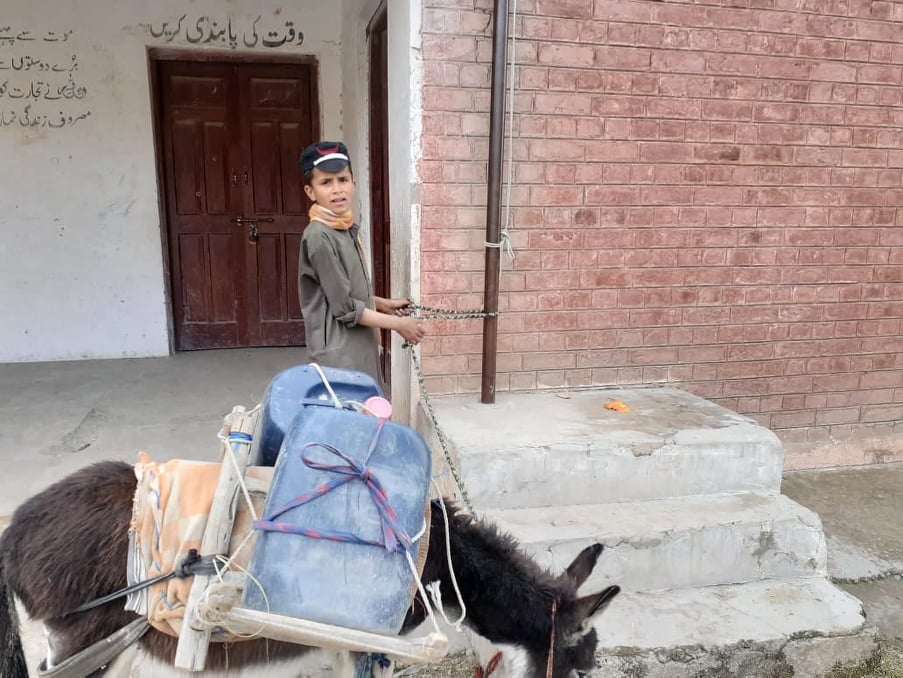PESHAWAR: Mountain villages in Karak district of the southern part of Khyber Pakhtunkhwa are drying up. While the region’s wells produce oil and gas, they have stopped to fill with something more basic to survival: water.
Every morning, 13-year-old Muhammad Aqaib from Dorray Algad Banda loads his donkey with 40-liter canisters as he leaves for school. After classes, he fills them with water from a nearby well — the only water source for many homes in the area.
“I travel three kilometers to attend my classes at Middle School Dorray Wali Banday. I leave my donkey outside. When classes end, I take water from the well and then put the canisters on his back and we walk back home,” the boy told Arab News.
When he grows up, Aqaib wants to become a civil engineer and supply his village with water. But it may be too late as many families have already been forced to leave the area and seek livelihood elsewhere.
According to Aqaib’s father, Abdul Naeem, the water shortage in Dorray Algad Banda has driven several hundred people out of their homes.
“Most of our villagers are farmers, they depend on their small agricultural land. You can see even how our sheep and goats are feed feeding on dust that covers all shrubs, because there is no water. Our land has turned into parched, cracked mud.”

Schoolboy Muhammad Aqaib takes water from the only well still open in the area of Dorray Algad Banda, Karak district, Khyber Pakhtunkhwa, March 10, 2020. (AN photo)
Groundwater depletion in the region is chronic. Aqaib has been drawing water for his family since he started school six years ago. While his father recognizes the burden put on the boy, like many others he is hopeless.
“Never ever, never ever is this water wasted. Such is our life, we should go with it,” he said.
Abdul Saddiq, one of the village’s leaders, said that neither public representatives nor the provincial government seem to care.
“Because of poverty, we can’t raise our voice at any forum. There were three water wells, but groundwater levels have gone so low that only one is left. Villagers wait for their turn to draw water from it,” he said.
The well he referred to is the one used by Aqaib. Already 36 meters deep, it is a matter of short time until this one runs dry as well.
The drying up district of Karak has a population of slightly more than 706,000. In recent years, huge reserves of natural oil and gas were discovered in the area, and exploration started. While no studies have been conducted on how they impact the region’s communities, hydraulic fracturing at drilling sites always severely depletes water supplies in drought-prone areas.

Muhammad Aqaib leaves his donkey loaded with water canisters in front of his school. After classes, he will fill the canisters with water and walk three kilometers home to Dorray Algad Banda, Karak district, Khyber Pakhtunkhwa, March 10, 2020. (AN photo)
Elected representatives visit the village during election seasons. But when they win the ballot, they do not return.
“Before elections, our lawmakers make promises, but then they don’t bother to deliver,” Saddiq said.
Shahid Khattak, member of the National Assembly from the Pakistan Tehreek-e-Insaf (PTI) faction, who comes from Karak, told Arab News that not only remote villages, but the whole district was facing water shortage.
He said the government had worked out a comprehensive plan to ensure potable water supply to the region. He could not tell, however, when this would happen.












